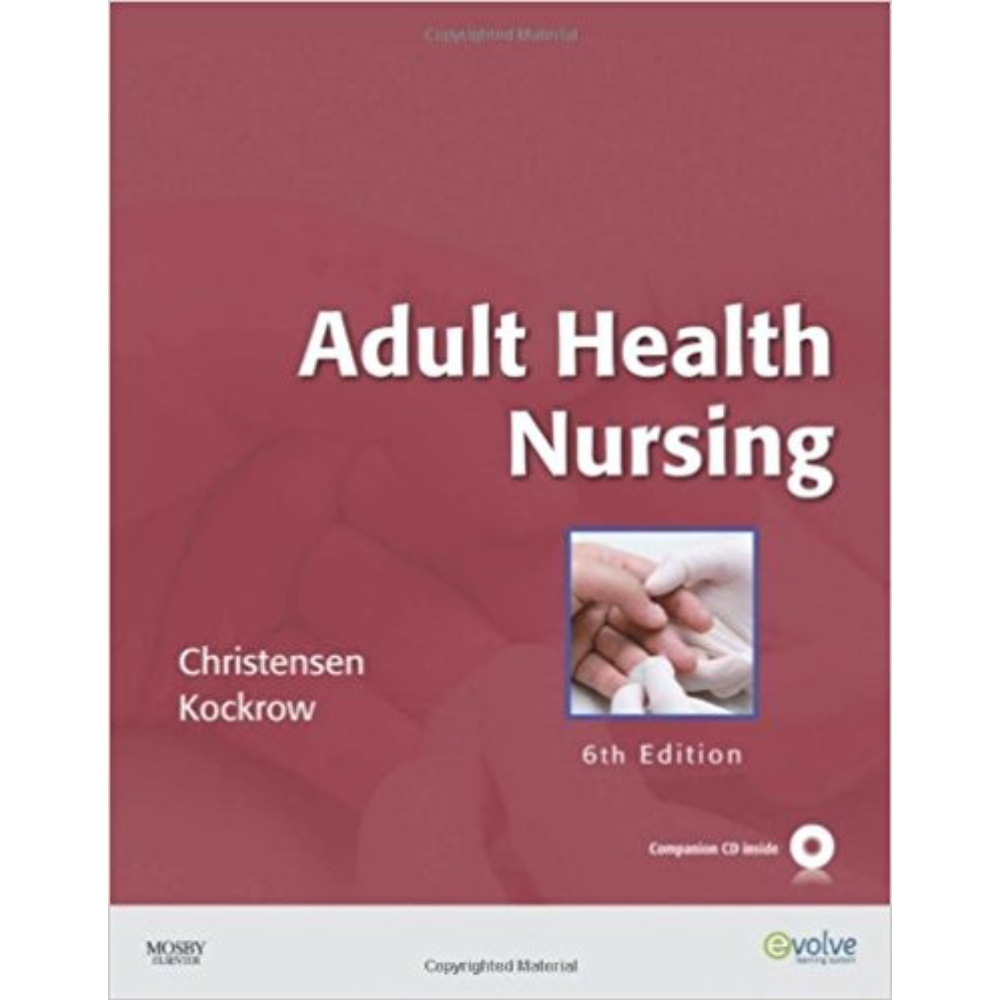Adult Health Nursing 6th Edition By kockrow – Test Bank
Chapter 11: Care of the Patient with an Endocrine Disorder
Test Bank
MULTIPLE CHOICE
1. The amount of hormone released by any gland is controlled by
a. a negative feedback system.
b. a positive feedback system.
c. exogenous stimuli.
d. the nervous system.
ANS: A
The amount of hormone released is controlled by a negative feedback system.
DIF: Cognitive Level: Knowledge REF: Page 485 OBJ: 2
TOP: Anatomy KEY: Nursing Process Step: Assessment
MSC: NCLEX: Physiological Integrity
2. Which diagnostic test for diabetes mellitus provides a measure of glucose levels for the previous 8 to 12 weeks?
a. Fasting blood sugar (FBS)
b. Oral glucose tolerance test
c. Glycosylated hemoglobin (HbA1c)
d. Postprandial glucose test
ANS: C
Glycosylated hemoglobin (HbA1c)—This blood test measures the amount of glucose that has become incorporated into the hemoglobin within an erythrocyte. Because glycosylation occurs constantly during the 120-day life span of the erythrocyte, this test reveals the effectiveness of diabetes therapy for the preceding 8 to 12 weeks.
DIF: Cognitive Level: Knowledge REF: Page 512, Box 11-2
OBJ: 12 TOP: Glucose monitoring
KEY: Nursing Process Step: Assessment MSC: NCLEX: Physiological Integrity
3. The patient is a newly diagnosed diabetic. Until he has his diabetes under control, which test will furnish valuable immediate feedback information?
a. BS
b. HgbA1c
c. OGTT
d. Clinitest
ANS: A
Diabetics should do a fingerstick blood glucose level test before each meal and at bedtime each day until their disease is under control. HgbA1c serum test reveals the effectiveness of diabetes therapy for preceding 8-12 weeks.
DIF: Cognitive Level: Analysis REF: Page 511, Box 11-2
OBJ: 12 TOP: Diabetes mellitus
KEY: Nursing Process Step: Planning MSC: NCLEX: Physiological Integrity
4. A 63-year-old patient on the medical floor has a diagnosis of adrenal hyperfunction (Cushing’s syndrome). She will probably have to adhere to a diet that contains
a. less sodium.
b. more calories.
c. less potassium.
d. more carbohydrates.
ANS: A
The diet should be lower in sodium to help decrease edema.
DIF: Cognitive Level: Analysis REF: Page 505 OBJ: 6
TOP: Cushing’s syndrome KEY: Nursing Process Step: Planning
MSC: NCLEX: Physiological Integrity
5. The patient is a 20-year-old college student who has type 1 diabetes and normally walks each evening as part of her exercise regimen. She now plans to enroll in a swimming class to meet her physical education requirement. Which adjustment in her treatment plan will the nurse help this patient make?
a. Time her morning insulin injection so that the peak action will occur during her swimming class.
b. Delete her normal walks on days she has swimming class.
c. Delay the meal before the swimming class until the session is over.
d. Monitor her glucose level before, during, and after swimming to determine the need for alterations in food or insulin.
ANS: D
Exercise can reduce insulin resistance and increase glucose uptake for as long as 72 hours as well as reducing blood pressure and lipid levels. However, exercise can carry some risks for patients with diabetes, including hypoglycemia.
DIF: Cognitive Level: Analysis REF: Page 512 OBJ: 14
TOP: Diabetes mellitus KEY: Nursing Process Step: Planning
MSC: NCLEX: Physiological Integrity
6. A long-term complication of diabetes mellitus is
a. Cushing’s disease.
b. renal failure.
c. hypothyroidism.
d. hyperglycemia.
ANS: B
Long-term complications of diabetes include blindness, cardiovascular problems, and renal failure.
DIF: Cognitive Level: Analysis REF: Page 526 OBJ: 20
TOP: Diabetes mellitus KEY: Nursing Process Step: Assessment
MSC: NCLEX: Physiological Integrity
7. A patient has returned to his room after a thyroidectomy. He is presenting with signs and symptoms of thyroid crisis. During thyroid crisis, exaggerated hyperthyroid manifestations may lead to the development of the potentially lethal complication of
a. severe nausea and vomiting.
b. bradycardia.
c. delirium with restlessness.
d. congestive heart failure.
ANS: D
In thyroid crisis, all the signs and symptoms of hyperthyroidism are exaggerated. The patient may develop congestive heart failure and die. Additionally, the patient may develop nausea, vomiting, severe tachycardia, severe hypertension, and occasionally hyperthermia up to 41° C (106° F). Extreme restlessness, cardiac dysrhythmia, and delirium may also occur.
DIF: Cognitive Level: Analysis REF: Page 498 OBJ: 9
TOP: Thyroidectomy KEY: Nursing Process Step: Assessment
MSC: NCLEX: Physiological Integrity
8. In diabetes insipidus, clinical manifestations are caused by a deficiency of
a. antidiuretic hormone (ADH).
b. follicle-stimulating hormone (FSH).
c. thyroid-stimulating hormone (TSH).
d. adrenocorticotropic hormone (ACTH).
ANS: A
Diabetes insipidus is a transient or permanent metabolic disorder of the posterior pituitary in which ADH is deficient.
DIF: Cognitive Level: Knowledge REF: Page 492 OBJ: 5
TOP: Diabetes insipidus KEY: Nursing Process Step: Assessment
MSC: NCLEX: Physiological Integrity
9. A patient has recently been diagnosed with acromegaly. Using Maslow’s hierarchy, which of the nursing diagnoses listed below should be of the highest priority in caring for him?
a. Ineffective coping
b. Activity intolerance
c. Risk for trauma
d. Chronic low self-esteem
ANS: C
Nursing interventions are mainly supportive. The presence of muscle weakness, joint pain, or stiffness warrants assessment of the ability to perform activities of daily living (ADLs).
DIF: Cognitive Level: Analysis REF: Pages 489, 491, Nursing Diagnoses box
OBJ: 6 TOP: Acromegaly KEY: Nursing Process Step: Planning
MSC: NCLEX: Safe, Effective Care Environment
10. Which nursing diagnosis is appropriate for a patient diagnosed with hypothyroidism as the result of a newly developed goiter?
a. Diarrhea
b. Hyperthermia
c. Disturbed body image
d. Increased cardiac output
ANS: C
Nursing diagnosis and interventions for the patient with simple (colloid) goiter include Body image, disturbed, risk for, related to altered physical appearance.
DIF: Cognitive Level: Analysis REF: Page 501, Nursing Diagnosis
OBJ: 6 TOP: Hypothyroidism
KEY: Nursing Process Step: Planning MSC: NCLEX: Psychosocial Integrity












Reviews
There are no reviews yet.